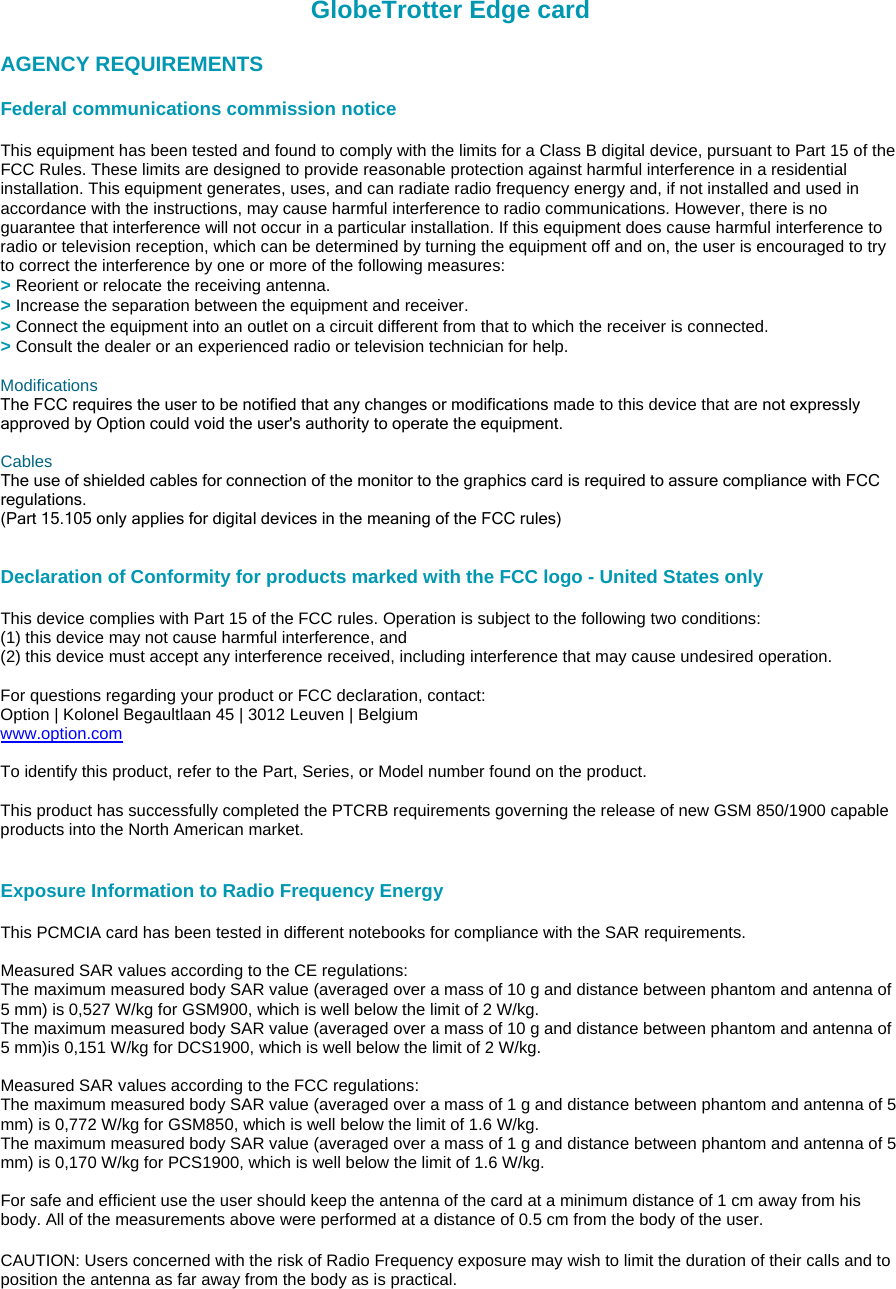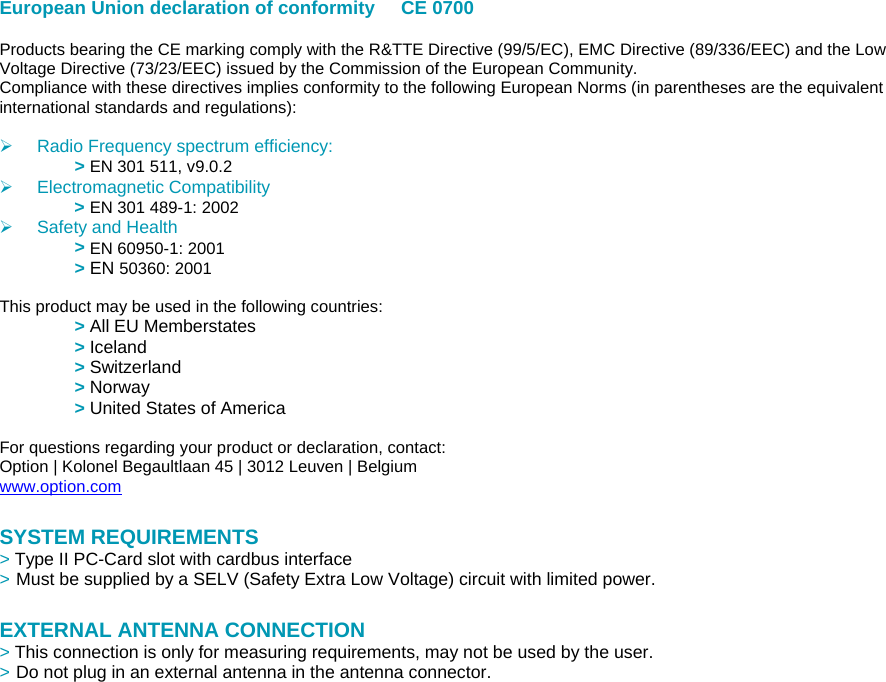Option OGLE PCMCIA card for EGPRS/GPRS/GSM User Manual Leaflet GlobeTrotter Edge
Option NV PCMCIA card for EGPRS/GPRS/GSM Leaflet GlobeTrotter Edge
Option >
Contents
- 1. User Manual
- 2. User Manual Warning Statements
User Manual Warning Statements

